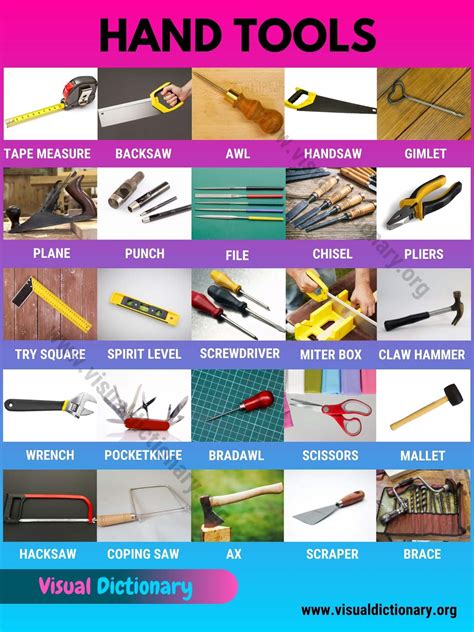What to Use: A Comprehensive Guide to Choosing the Right Tools for Your Needs
Whether you’re a professional in a specific industry or simply someone who enjoys DIY projects, choosing the right tools for the job is essential for success. With so many options available, it can be overwhelming to know where to start. That’s why we’ve put together this comprehensive guide to help you make informed decisions about what to use.

The first step in choosing the right tools is to understand your specific needs. Consider the following factors:
- Purpose: What tasks do you need the tools for?
- Level of Expertise: Are you a beginner, intermediate, or advanced user?
- Budget: How much are you willing to spend on tools?
- Frequency of Use: How often will you be using the tools?
- Available Space: Where will you be storing the tools?
There are countless types of tools available, each designed for a specific purpose. Here are some of the most common categories:
- Hand Tools: These are tools that are powered by human effort, such as hammers, screwdrivers, wrenches, and pliers.
- Power Tools: These are tools that are powered by electricity or air pressure, such as drills, saws, and sanders.
- Measuring Tools: These tools are used to measure distances, angles, and other physical properties, such as rulers, tape measures, and protractors.
- Marking Tools: These tools are used to mark surfaces for cutting, drilling, or other purposes, such as pencils, markers, and scribes.
- Safety Equipment: These tools are used to protect users from injury, such as safety glasses, gloves, and earplugs.
Once you understand your needs and the types of tools available, you can start selecting the right tools for the job. Here are some tips:
- Read Reviews: Check online reviews to see how other users have experienced the tools you’re considering.
- Compare Prices: Don’t buy the first tool you find. Take the time to compare prices from different retailers.
- Consider Warranty: Look for tools with a good warranty to protect your investment.
- Try It Out: If possible, try out a tool before you buy it to make sure it meets your expectations.
- Ask for Advice: Don’t hesitate to ask for advice from professionals or other users who have experience with the tools you’re considering.
| Tool | Purpose |
|---|---|
| Hammer | Driving nails |
| Screwdriver | Driving and removing screws |
| Wrench | Tightening and loosening nuts and bolts |
| Pliers | Gripping and cutting objects |
| Saw | Cutting wood, metal, and other materials |
| Tool | Purpose |
|---|---|
| Drill | Drilling holes in wood, metal, and other materials |
| Saw | Cutting wood, metal, and other materials |
| Sander | Smoothing surfaces |
| Grinder | Grinding and cutting metal |
| Impact Driver | Driving and removing screws |
| Tool | Purpose |
|---|---|
| Ruler | Measuring distances |
| Tape Measure | Measuring longer distances |
| Protractor | Measuring angles |
| Level | Checking for level surfaces |
| Square | Measuring and marking right angles |
| Tool | Purpose |
|---|---|
| Safety Glasses | Protecting eyes from flying debris |
| Gloves | Protecting hands from cuts and abrasions |
| Earplugs | Protecting hearing from loud noises |
| Respirator | Protecting lungs from dust and fumes |
| Hard Hat | Protecting head from falling objects |
When brainstorming ideas for new applications, consider using the term “think-ade.” This playful word encourages you to think outside the box and come up with innovative solutions.
- Plan ahead: Take the time to plan your project and determine which tools you will need.
- Research your options: Read reviews, compare prices, and ask for advice to make informed decisions.
- Buy quality tools: Invest in high-quality tools that will last.
- Maintain your tools: Keep your tools clean and in good working order.
- Use the right tool for the job: Don’t try to use a hammer to drive screws. Choose the right tool for the task at hand.
- Buying too many tools: Don’t buy tools that you don’t need. Start with the basics and add more tools as your needs grow.
- Buying cheap tools: Cheap tools often break easily and can be a waste of money.
- Not maintaining your tools: Neglecting to maintain your tools can lead to accidents and poor performance.
- Using the wrong tool for the job: Using the wrong tool for the job can be inefficient and even dangerous.
- Not wearing safety equipment: Always wear safety equipment when using tools to protect yourself from injury.
Choosing the right tools is essential for success in any project. By understanding your needs, researching your options, and following effective strategies, you can make informed decisions that will help you get the job done right. Remember to think-ade and be creative in your approach, and always prioritize safety.
